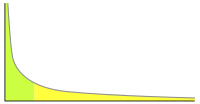
Photo from wikipedia
Microgrids have arisen as an alternate solution to the problem of power generation in distributed energy. Compared to ac microgrids, dc microgrids (DC MGs) are superior in terms of system… Click to show full abstract
Microgrids have arisen as an alternate solution to the problem of power generation in distributed energy. Compared to ac microgrids, dc microgrids (DC MGs) are superior in terms of system efficiency, power quality, affordability, and ease of control. For the integration of renewable energy generation into microgrids, power electronic converters are required. When power electronics converters are tightly regulated, they behave as a constant power load (CPL) which exhibits a negative incremental impedance characteristic. As a result, oscillations occur in voltage response at a DC bus. To suppress the voltage oscillations in DC MGs, various damping stabilization techniques are proposed by researchers. This paper provides a comprehensive review on active damping stabilization techniques. To improve the system’s stability, active damping can be implemented in three distinct zones: source-side, load side or CPL side, and intermediate level. After analyzing each zone, their merits and drawbacks have been presented. Moreover, CPL modelling, performance of cascaded DC–DC systems, the effect of the load on the source subsystem, the effect of the source on the load converter, and stability analysis are discussed. Finally, concluding remarks and future research directions are highlighted.
Journal Title: Energies
Year Published: 2023
Link to full text (if available)
Share on Social Media: Sign Up to like & get
recommendations!